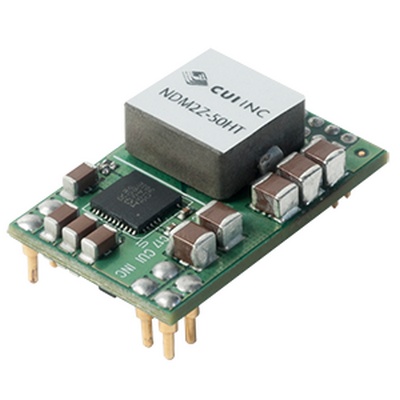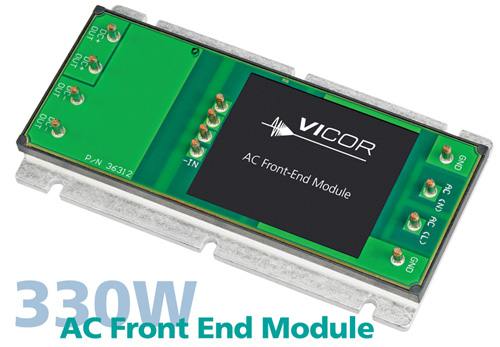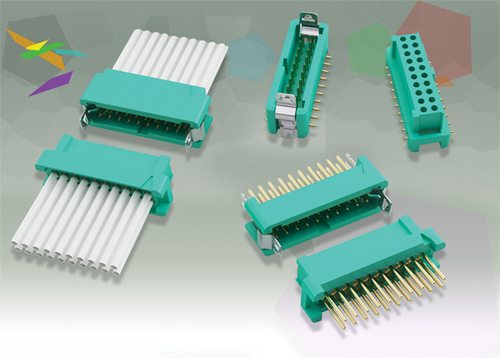Power
With ever more focus on lowering system power, particularly when measured in the context of available global resources, it is not surprising that many companies exhibiting at electronica were announcing new solutions in delivering, monitoring, and managing power.
However, as well as those companies who specialize in power solutions, such as Vicor and CUI, some of the innovation was also coming from companies less associated with power, such as ADI and Microchip.
For its part, Microchip has developed a new range of fully-analog power conversion controllers and its first ever range of discrete power MOSFETs. Microchip says it is targeting point of load (POL) DC/DC conversion up to 30 V and it builds on the company’s range of drivers, which have been available for around 2 years.
Also targeting DC/DC conversion, Analog Devices (ADI) introduced its latest isoPower devices at electronica, which are not only unique in their technology offering, but also claim to reduce the board space required by 75% when measured against its competitors’ functional equivalent. The proprietary technology uses tiny integrated transformers instead of a module-based solution to isolation, and using the iCoupler variation can also add isolated data transfer in the same package. The new power/data devices (ADuM521x and ADuM621x) can deliver between 150 mW at between 3.15 and 5.25 V, with either 2.5 kV RMS (1 minute) or 3.74 kV RMS (1 minute) isolation.
With higher power, POL DC/DC conversion also in high demand, CUI was introduced its latest module-based solutions, which are available in 12, 25 and 50 A versions. CUI has a licensing agreement in place with Ericsson Power, which allows it to offer pin-compatible modules as a second source. The NDM2Z series is the latest addition to the company’s Novum Advanced Power product line, which targets the ICT (Information and Communication Technology) application space.
 |
|
|
Figure 1. |
CUI’s NDM2 series digital dc-dc point-of-load (POL) modules are high performance devices designed to meet the needs of the most demanding intermediate bus power systems. |
Power specialist Vicor was also exhibiting and used the show to introduce its first AC/DC front-end module in its VI Brick format. It represents the ‘next generation’ for Vicor, as it integrates rectification, filtering and transient protection. It also provides compatibility with Vicor’s DC/DC products to deliver a power solution from ‘the wall plug to the point of load’.
 |
|
|
Figure 2. |
Vicor’s new AC/DC front-end module is its first in the VI Brick format. |
Also noteworthy
Other product introductions which were given a high profile included a new connector range developed and manufactured by Harwin. The Gecko G125 series breaks with tradition by featuring a 1.25 mm pitch, which, according to Harwin, has taken around 2 years to develop.
It is significantly smaller than its existing Datamate connectors, which have a 2 mm pitch, but due to the smaller size it is only capable of delivering 2 A per contact, as opposed to the 3 A/contact of Datamate. However, that is still 100% better than connectors with a comparable pitch, which can typically only deliver 1 A/contact.
 |
|
|
Figure 3. |
Harwin’s new Gecko range of connectors features a 1.25mm pitch. |
Although announced prior to electronica, Cherry was showcasing its energy harvesting technology alongside its partner, NXP. Together they have developed a lighting solution that uses energy harvested by the action of pushing a switch to wireless control an LED fitted with NXP’s JN5168 wireless microcontroller. As a result, the switch needs no power source, allowing it to be fitted practically anywhere within range of the light fitting. As well as on and off, the switch is also capable of sending dimming data, so the LED light(s) can be dimmed as well as simply turned on and off.
Cherry has developed a proprietary protocol for its demonstrator but said it is willing to work with customers to customize the switch. Currently, the technology is capable of generating around 0.3 mJ of energy with each actuation, but Cherry said they are working on a new generator that will be able to produce nearer 1.5 mJ.
Another innovative product introduction came from Microchip, who has developed an E-field based gesture recognition device, which it has named GestIC. It is capable of detecting a hand in 3D space above the electrodes on a PCB, at up to 15 cm distance.
As it recognizes and discriminates in 3D space, it can detect three-axis of movement, opening up a number of application areas. It consumes just 150 μW in its active state, which means it could be used in battery-powered devices in an always-on state. Its low power means it consumes up to 90% less energy than a camera-based 3D gesture recognition solution. Microchip anticipates its uses will be numerous and is supplying it with a comprehensive library of gestures, including flick, track and click, as well as symbol/circle recognition.
As usual, electronica did not fail to disappoint its 72,000+ visitors and will, no doubt, provide enough innovative product introductions to keep us all occupied until electronica 2014!
